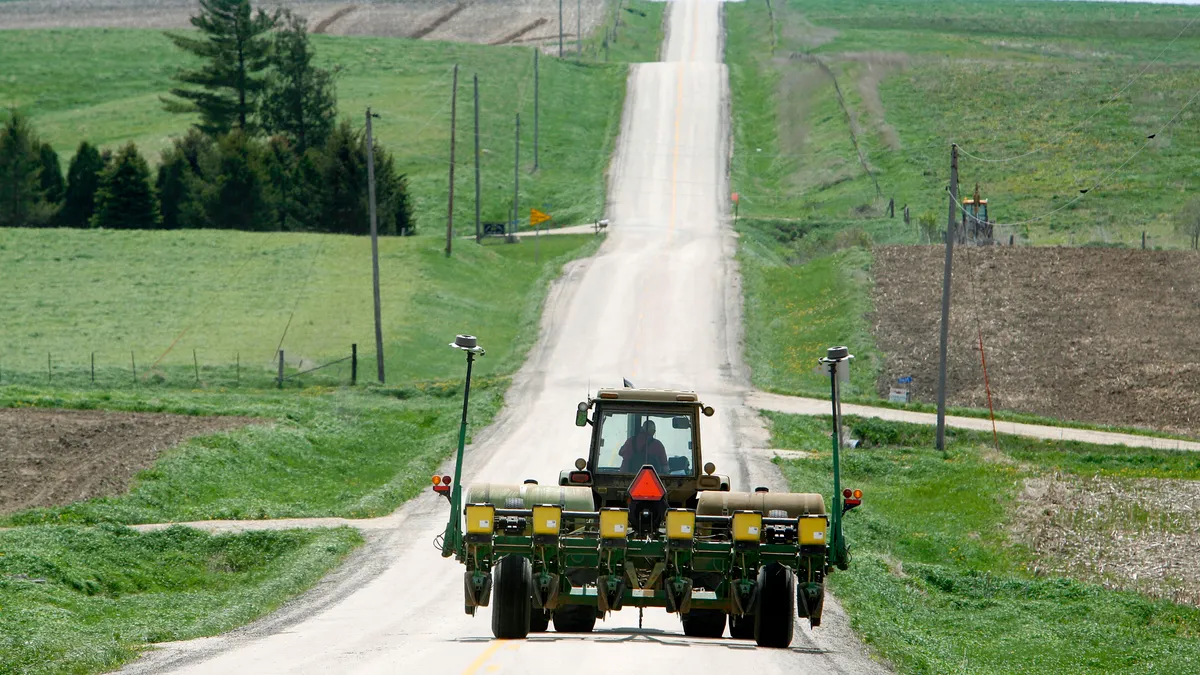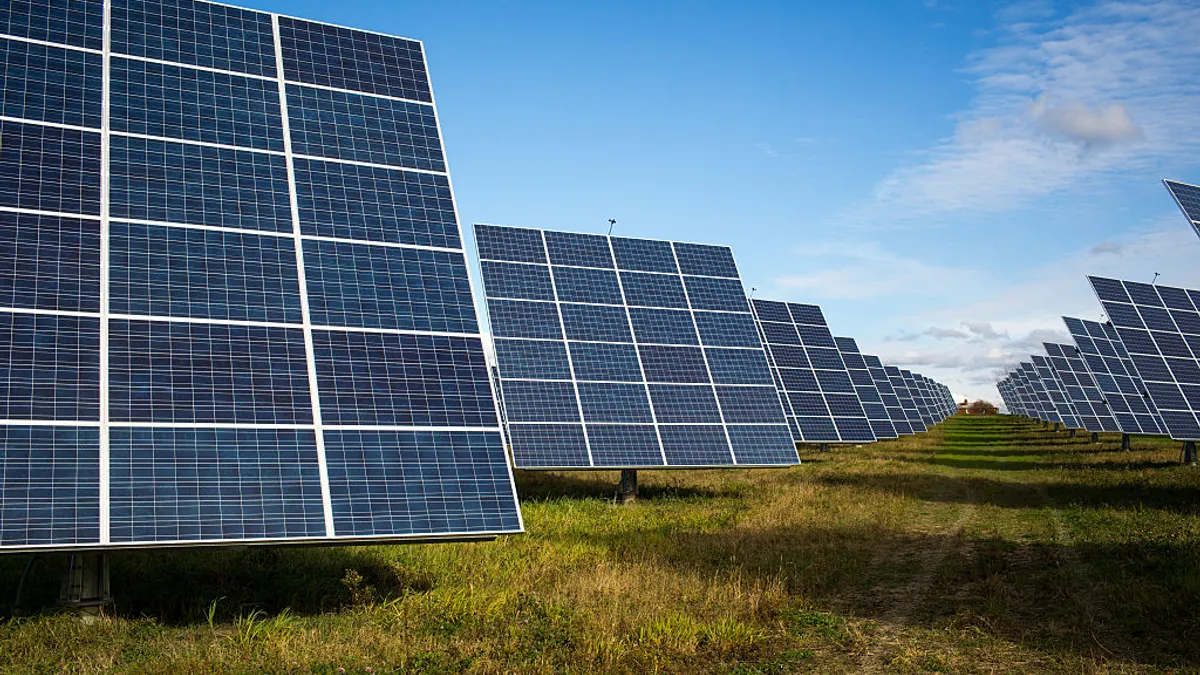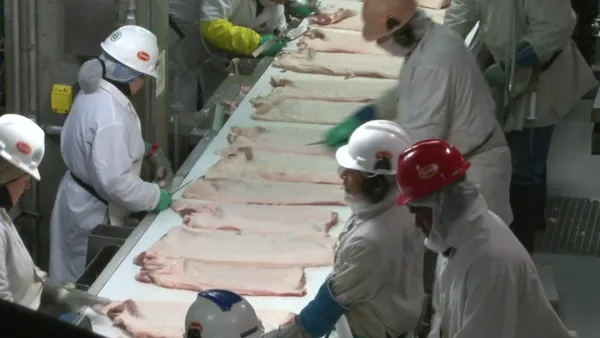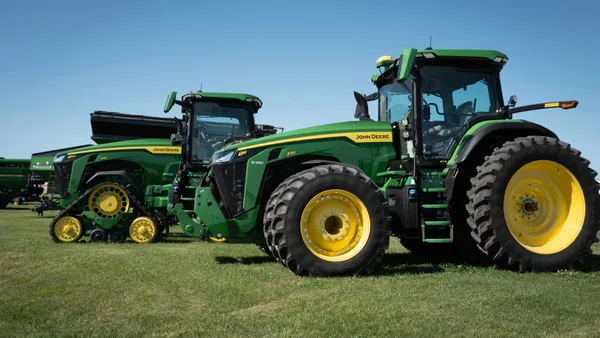Dive Brief:
- Deere & Co. reported muted sales in the first quarter as it looks to mitigate tariff impacts on its farm and construction equipment costs and supply chains.
- The tractor giant’s Q1 sales slumped 35% to $6.8 billion over last year, driven by sluggish global demand for agriculture and earthmoving equipment. Deere’s profits were slashed to $869 million for the period as efforts to cut production and reduce the company’s dealer inventories continued.
- Amid a downturn in the farm economy, Deere and its competitors are also navigating a dynamic trade backdrop complicated by tariffs on aluminum and steel imports. The tariffs with China will have an “immaterial” impact on the business, SVP and CFO Joshua Jepsen said in an earnings call Thursday.
Dive Insight:
Over the years, Jepsen said Deere has focused on supplier resiliency and cost management to better respond to external disruptions that stem from the COVID-19 pandemic and global trade issues — “which position us well to navigate the current environment.”
The tractor giant has leveraged its scale to become a net exporter of agriculture and turf equipment from the United States. More than 75% of Deere’s domestic sales account for products assembled at U.S. manufacturing facilities, Jepsen said. A small percentage of equipment parts come from other countries.
“In terms of component sourcing, about 10% of our U.S. manufacturing cost of goods sold come from Mexico, with less than 2% coming from China and approximately 1% from Canada,” Jepsen said.
In terms of exports, Jepsen said more than half of Deere’s products are sent to Canada, with the remainder going to Europe, Brazil and Australia.
Deere, Agco and other tractor markers could face stronger headwinds following Trump’s recent tariff spree, which has opened up the U.S. to retaliatory measures from major trading partners and created market uncertainty. The European Commission on Thursday said it will “react firmly and immediately” against tax increases related to Trump’s proposed “reciprocal” trade policy.
“The situation is certainly fluid and we continue to monitor changes in policy as they occur,” Jepsen said before reciprocal tariffs were proposed. “Teams across the organization are continually running potential scenarios to understand risks along with opportunities to mitigate these impacts.”
In addition to looming trade disruptions, Deere is working through supply challenges related to the farm economy downturn. In North America, large field equipment inventories were down 25% in 2024 over the previous year, with 220-plus horsepower tractors down twice as much as the industry, Josh Beal, Deere’s director of investor relations, said in the call. New combine orders have also been below expectations.
Additionally, the company reduced construction and forestry production by about 35% in Q1 to rightsize inventory for the remainder of the year, Beal said.
Despite the earnings declines amid a challenging quarter, Faisal Hersi, an equity analyst at Edward Jones, said in a research brief that Deere’s revenue and earnings per share slightly exceeded expectations. However, the company’s operating income for agriculture and turf, and construction and forestry equipment segments were well below expectations, he said.
Looking ahead, Deere is expecting net income between $5 billion to $5.5 billion this fiscal year as challenges persist, according to its earnings report.
“We think the markets will remain focused on whether 2025 marks the bottom of the agricultural-machinery cycle,” Hersi noted.













